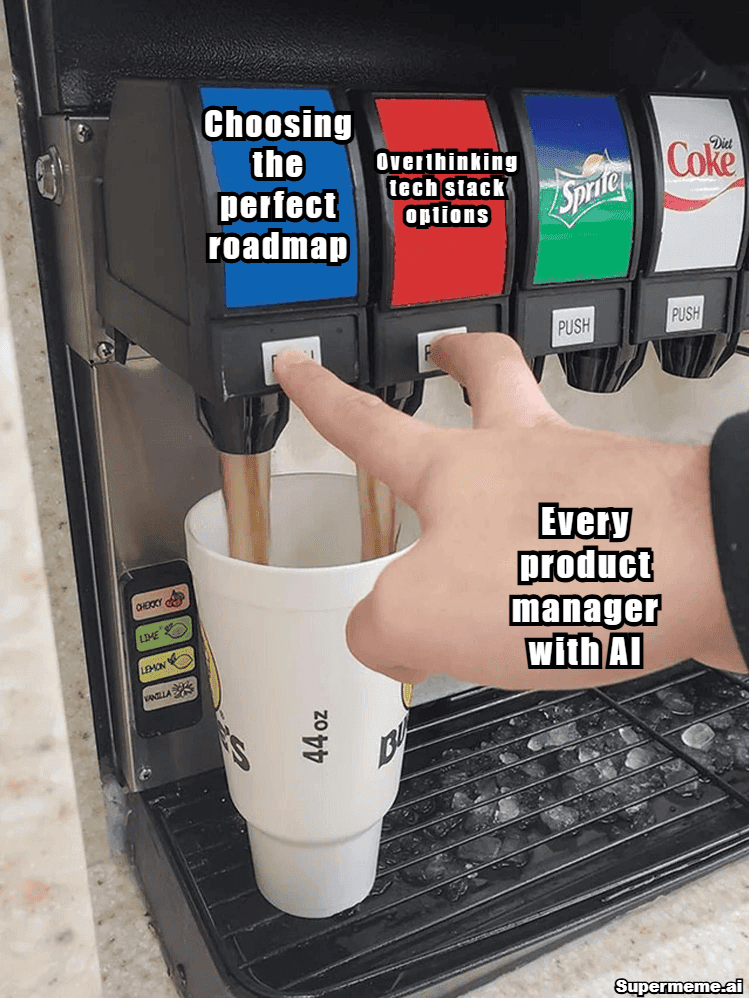The landscape of product development is undergoing a profound transformation, driven by the rapid adoption of artificial intelligence (AI) tools. For product managers (PMs), AI is not just another technology trend—it is a catalyst that is fundamentally reshaping how products are conceived, built, launched, and improved. This article explores the pivotal ways in which AI tools are revolutionizing product management, the benefits and challenges they bring, and what the future holds for product teams.
The New Era of Product Management: Powered by AI
AI’s Impact on Product Management
AI is now at the core of modern product management. According to recent research, companies integrating AI into their workflows have reported a 20–30% increase in overall productivity, and by 2026, it is predicted that 75% of product managers will use AI-driven insights to refine their decision-making and product strategies. This shift is not just about automation—it’s about empowering PMs with unprecedented data-driven capabilities, freeing them from manual tasks, and enabling a sharper focus on strategy, creativity, and customer value.
Key Ways AI Tools Are Transforming Product Development
1. Accelerating Idea Generation and Product Discovery
AI-powered tools can analyze vast amounts of data from market trends, customer feedback, and competitor activity to surface new product opportunities and validate ideas quickly. Generative AI, for instance, enables teams to generate multiple design concepts, simulate various scenarios, and identify the most promising directions in minutes rather than weeks. Tools like Zeda.io and ChatGPT assist in brainstorming, concept evaluation, and even drafting initial product requirement documents, making the early stages of product development faster and more informed.
2. Data-Driven Decision Making
Traditional decision-making in product management often relied on intuition, limited research, and manual analysis. AI changes this by providing real-time, actionable insights from large and diverse datasets. Advanced analytics and predictive models can identify hidden patterns, forecast market shifts, and recommend optimal product features or pricing strategies. This enables PMs to make smarter, evidence-based decisions, reducing risks and increasing the likelihood of product success.
3. Enhanced Roadmap Planning and Prioritization
AI tools can analyze user data, market trends, and business objectives to recommend which features to prioritize and when to launch them. Predictive analytics helps PMs optimize product roadmaps, allocate resources efficiently, and ensure that development efforts are aligned with both customer needs and strategic goals. Tools like ProductBoard and Aha! Leverage AI to assist in roadmap creation, feature prioritization, and scenario planning.
4. Streamlining Workflow and Automating Repetitive Tasks
AI-powered automation is eliminating many of the repetitive, time-consuming tasks that once bogged down product managers. From scheduling meetings and organizing feedback to generating reports and tracking project progress, AI tools like Motion, Otter.ai, and Spark AI free up PMs to focus on higher-value activities. This not only boosts productivity but also reduces human error and ensures more consistent execution.
5. Rapid Prototyping and Iteration
Generative AI enables teams to quickly create and test prototypes, simulate user interactions, and iterate on designs based on real-time feedback. This rapid prototyping accelerates the product development lifecycle, allowing teams to validate assumptions, detect issues early, and bring products to market faster. AI-driven simulations and virtual prototyping are especially valuable in industries where physical prototyping is costly or time-consuming.
6. Personalization and Customer Insights
AI excels at analyzing customer behavior, segmenting users, and uncovering nuanced insights from feedback. This enables PMs to design personalized product experiences, tailor features to specific user segments, and anticipate customer needs. AI-powered chatbots and recommendation engines further enhance customer engagement by providing real-time, context-aware support and suggestions.
7. Predictive Analytics and Risk Mitigation
AI tools can forecast demand, identify potential bottlenecks, and highlight risks before they become critical issues. By analyzing historical data and current trends, AI helps PMs anticipate challenges, optimize resource allocation, and make proactive adjustments to development plans. This predictive capability is invaluable for managing complex projects and ensuring timely, high-quality product releases.
8. Quality Assurance and Continuous Improvement
AI automates many aspects of quality assurance, from automated testing to monitoring user feedback for bug detection and feature improvement. Machine learning models can identify error patterns, suggest fixes, and even generate code snippets to resolve issues, leading to faster iteration cycles and higher product quality.

Automotive Design: Companies like Toyota and BMW use generative AI to explore countless design variations, optimizing for performance and sustainability.
Supply Chain Optimization: Amazon and FedEx leverage AI to forecast demand, manage inventory, and streamline logistics, resulting in reduced waste and faster delivery times.
Software Development: AI-powered code assistants and bug detection tools accelerate coding tasks, automate testing, and improve code quality, freeing developers to focus on innovative solutions.
The Evolving Role of the Product Manager
As AI automates routine tasks and augments analytical capabilities, the role of the product manager is shifting:
From Data Cruncher to Strategic Leader: PMs are spending less time on manual analysis and more on strategic vision, customer empathy, and cross-functional leadership.
Collaboration and Communication: With AI handling much of the data processing, PMs must excel at stakeholder management, aligning diverse teams, and translating AI-driven insights into compelling product narratives.
Creativity and Innovation: AI is a powerful partner in brainstorming and iteration, but human creativity, critical thinking, and intuition remain essential for breakthrough products.
Leading AI Tools for Product Managers
| Tool | Key Functionality |
| Zeda.io | AI-powered product discovery, feedback analysis, and document creation |
| Motion | AI-driven project management and workflow automation |
| Pendo | User analytics, in-app messaging, and customer feedback |
| Amplitude AI | Advanced behavioral analytics and cohort analysis |
| Otter.ai | Meeting transcription and searchable notes |
| ProductBoard | Customer roadmapping and feature prioritization |
| ChatGPT | Natural language processing, brainstorming, and documentation |
| Mixpanel | Real-time analytics, A/B testing, and user segmentation |
| H2O.AI | Automated machine learning, predictive modeling |
| Collato | AI-powered knowledge management and document search |
These tools exemplify how AI is embedded throughout the product management workflow, from ideation to launch and beyond.

Benefits of AI-Driven Product Development
Faster Time to Market: AI streamlines every stage of development, from idea generation to prototyping and testing, reducing lead times and enabling quicker product launches.
Improved Product Quality: Automated testing, data-driven insights, and continuous feedback loops lead to higher-quality products that better meet customer needs.
Greater Efficiency: AI automates repetitive tasks and optimizes workflows, freeing up human resources for more strategic work.
Enhanced Customer Satisfaction: Personalization and rapid response to feedback ensure products are more aligned with user expectations.
Competitive Advantage: Companies leveraging AI can respond faster to market changes, innovate more effectively, and maintain a stronger position in their industries.
Challenges and Considerations
While the benefits are substantial, AI adoption in product management comes with challenges:
Data Quality and Integration: AI is only as good as the data it processes. Ensuring data accuracy, completeness, and integration across systems is critical.
Explainability and Trust: As AI makes more decisions, PMs must ensure transparency and understandability, especially in regulated industries. Explainable AI (XAI) is gaining traction to address this need.
Human Oversight: Over-reliance on AI can lead to missed nuances or creative opportunities. Human judgment, empathy, and ethical considerations remain irreplaceable.
Skill Gaps: Product managers must develop new competencies in AI literacy, data analysis, and cross-functional collaboration to maximize the value of AI tools.

The Future of Product Management with AI
Looking ahead, AI’s role in product management will only grow. By 2025 and beyond, AI will become an indispensable collaborator—augmenting human creativity, accelerating innovation, and enabling product teams to deliver exceptional value at unprecedented speed. The most successful PMs will be those who embrace AI as a partner, continually adapt their skills, and focus on the uniquely human aspects of product leadership.
“AI tools aren’t just about automation—they’re about augmenting human creativity and decision-making in product development... The quality of AI’s work is not as good as humans’ work, but its speed is superhuman, and product managers can take advantage of that.”

Conclusion
AI tools are transforming product development from the ground up. For product managers, this means a shift from manual, intuition-driven processes to a new paradigm defined by data-driven insights, automation, and rapid innovation. By leveraging AI, PMs can make smarter decisions, accelerate time to market, deliver better products, and focus on what matters most: creating value for customers and driving business growth. As AI continues to evolve, its partnership with human ingenuity will define the next generation of product management.


